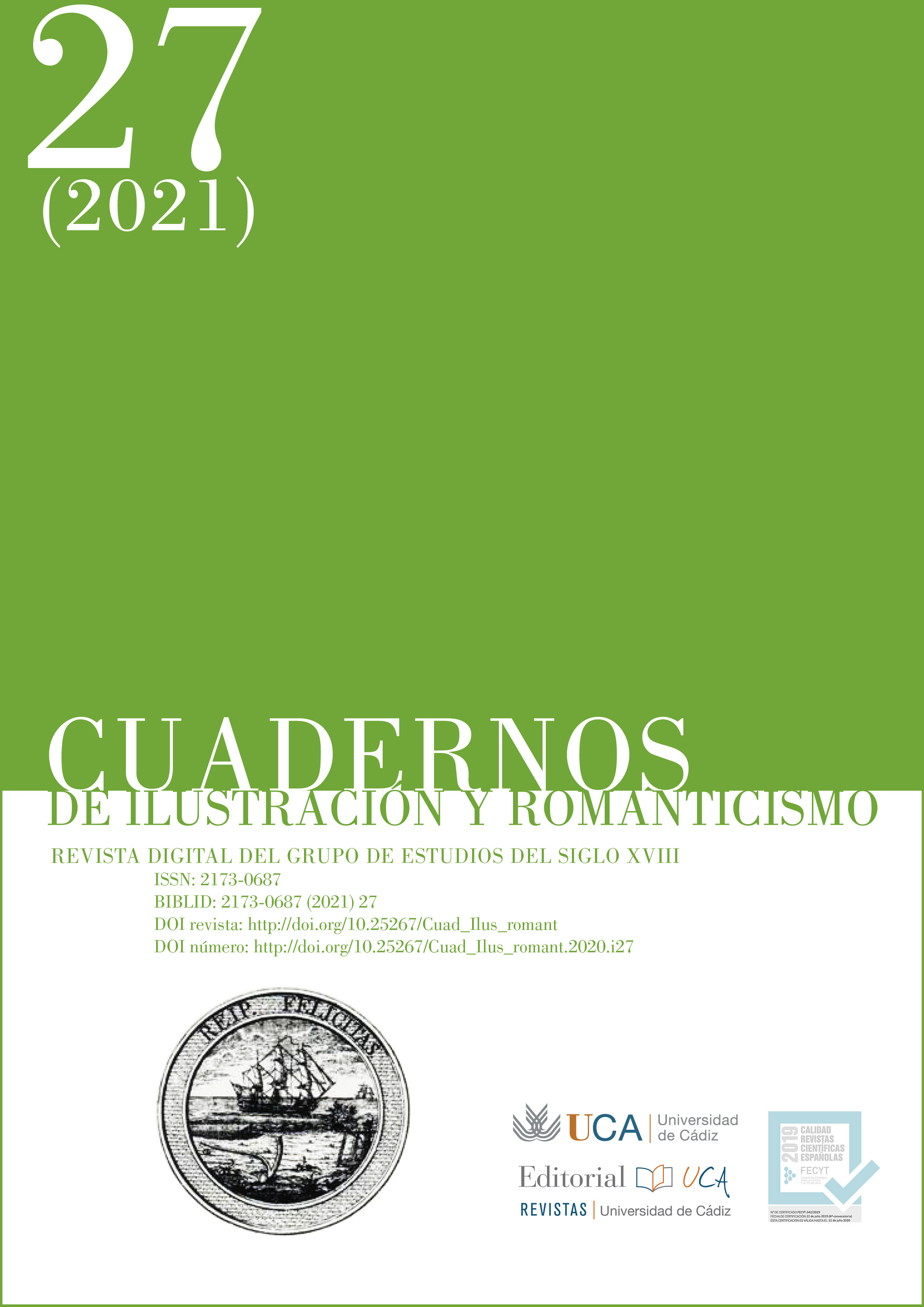The use of the human body as the basis of narratives in Francisco de Goya's The Disasters of War and Naji Al Ali's Handala

DOI
https://doi.org/10.25267/Cuad_Ilus_romant.2021.i27.08Info
Abstract
This article analyzes points of intersection and juxtaposition between two artistic series in two distinct temporal, geographic and cultural spaces. Through the study of the serie of etching The Disasters of War by Francisco de Goya and the comic series Handala by Naji Al Ali, I will expand on the idea of the transfer of the notions of corporal degradation and deterioration from one space to another, whether temporal or geographical. The Disasters of War mainly concentrates on death, hunger and resistance, which reflect on the cruel reality during the French occupation of Spain. Additionally, the Handala series focuses on refugees and resistance as a theme which forms the Palestinian collective narrative. Simultaneously, both series explore the topic of feminine resistance which is important to both struggles. Consequently, both create a lamentation-narrative as seen from the vulnerable body.
Keywords
Downloads
How to Cite
License

This work is licensed under a Creative Commons Attribution-NonCommercial-NoDerivatives 4.0 International License.
The papers published in this journal are the property of Cuadernos de Ilustración y Romanticismo: the source must be cited whenever they are used.
The authors retain the copyright © and grant the journal the right to publish. They may host their work in the final published version on personal websites or websites intended for scientific dissemination, provided that they indicate the source.
References
Antigüedad del Castillo, María Dolores (2010), «Goya y la génesis de un nuevo modelo femenino durante la Guerra de la Independencia», HMiC: història moderna i contemporània, nº 8, pp. 8-24.
Balsalobre García, Juana María (2002), «Una mirada a Goya: los desastres de la guerra», Espacio Tiempo y Forma. Serie V, Historia Contemporánea, nº 15, pp. 13-23.
Bozal, Valeriano (1983), Imagen de Goya, Barcelona, Lumen.
Bouvier, Paul (2011), «Yo Lo Vi. Goya Witnessing the Disasters of War: An Appeal to the Sentiment of Humanity», International Review of the Red Cross, vol. 93, nº 884, pp. 1107–1133.
Fundación Goya En Aragón. En línea.
Gandolfo, K. Luisa (2010), «Representations of Conflict: Images of War, Resistance, and Identity in Palestinian Art», Radical History Review, vol. 2010, nº 106, pp. 47–69.
Goya, Francisco de (1981), Diplomatario (ed. de Ángel Canellas López), Zaragoza, Institución Fernando el Católico.
Hamdi, Tahrir (2011), «Bearing witness in Palestinian resistance literature», Race & Class, vol. 52, nº 3, pp. 21-42.
Handala.org: Through the Eyes of a Palestinian Refugee. En línea.
Hughes, Robert, y Francisco de Goya (2003), Goya, Nueva York, Alfred A. Knopf.
Mano, José Manuel de la (2008), «Goya intruso. Arte y política en el reinado de José I (1808- 1813)», en Manuela B. Mena Marqués (coord.), Goya en tiempos de guerra, Madrid, Museo Nacional del Prado, pp. 55-81.
Muller, Priscilla E. (1984), Goya’s “Black” Paintings: Truth and Reason in Light and Liberty, Nueva York, Hispanic Society of America.
Najjar, Orayb Aref (2007), «Cartoons As a Site for the Construction of Palestinian Refugee Identity: An Exploratory Study of Cartoonist Naji Al-Ali», Journal of Communication Inquiry, vol. 31, nº 3, pp. 255–285.
«Palestine Refugees». United Nations Relief and Works Agency for Palestine Refugees in the Near East. En línea.
Rudrum, David (2005), «From Narrative Representation to Narrative Use: Towards the Limits of Definition», Narrative, vol. 13, nº 2, pp. 195–204.
Sontag, Susan (2004), Regarding the Pain of Others. Nueva York, Picador.
Shyammael (2017), «Reel Bad Arabs: How Hollywood Vilifies a People», YouTube, YouTube, 19 Mar. En línea.
Tomlinson, Janis A. (1992), Goya in the Twilight of Enlightenment, New Haven & London, Yale UP.
Totry, Mary, y Arnon Medzini (2013), «The use of the cartoons in popular protests that focus on geographic, social, economic and political issues», European Journal of Geography, vol. 4, nº 1, pp. 22-35.
Wurth, Jonathon P. (2015), «Where the Rocks Bleed Ink: Images of Self in Palestinian Political Cartoons», Mahurin Honors College Capstone Experience/Thesis Projects, nº 573. En línea.






